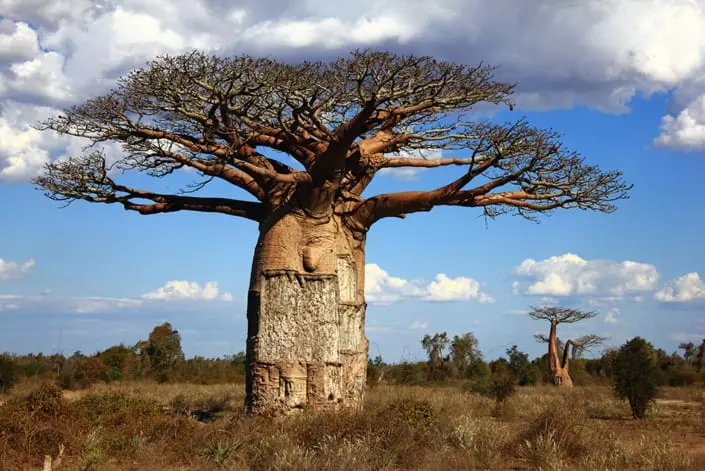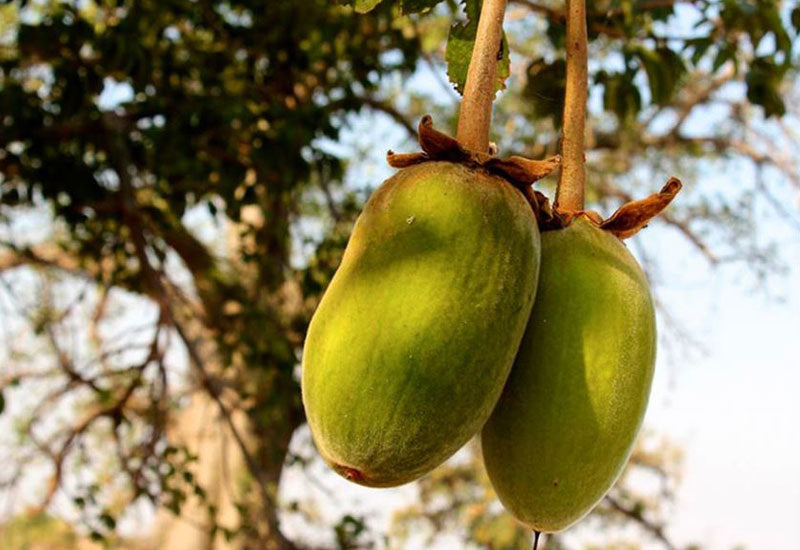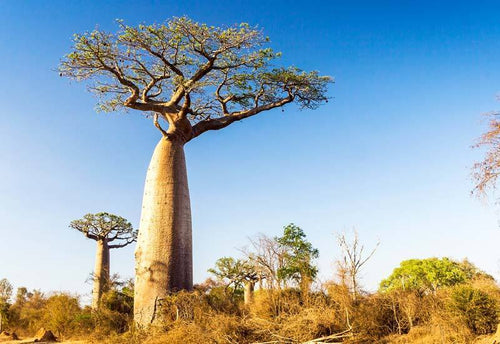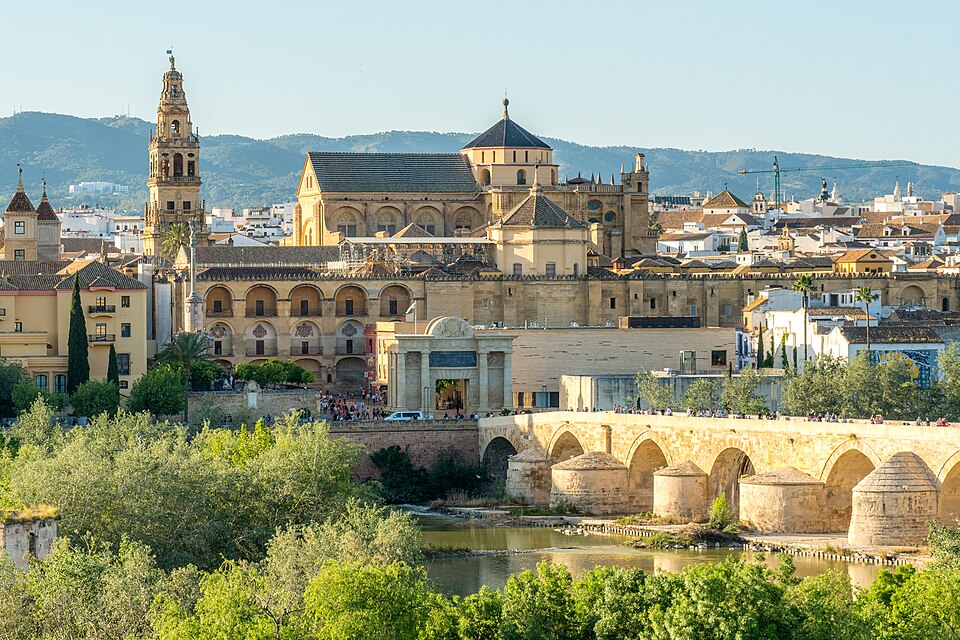BAOBAB: The African Tree of Life

Did you know that African tribes believe that the baobab tree once grew upright, but because of its pride, the gods decided to teach it a lesson by planting the tree upside down to teach it humility?
The baobab is the real representation of life in the African plains. The giant, strange looking tree grows in low-lying areas all over Africa, Madagascar, and Australia, having nine different species. It belongs to the genus Adansonia cluster of trees, and there are only two species native to the African mainland—the Adansonia Digitata and the Adansonia Kilima. Six of the other species can be located in Madagascar and another in Australia.
Here are some facts to know about the baobab tree that is regarded as the tree of life.
FACT 1: The baobab tree can grow to enormous sizes and can live up to 3,000 years. They go by many nicknames as well which include boab, boaboa, tabaldi, monkey bread, upside down tree, bottle tree, and dead rat tree, to name a few.
FACT 2: The Baobab tree is definitely the symbol of the African jungle and this massive tree is also known as the tree of life, because it has many useful properties. It acts like a huge succulent and its trunk is packed with up to 80% water. One baobab tree contains 4,500 liters (or 1,189 gallons) of water. This is how it became known as "The Tree of Life". The center of the tree can also give people shelter.
FACT 3: The bark and inner parts of the baobab tree is soft, fibrous, and resistant to fire. It can be used to weave clothes and rope. Other parts of the baobab can also be used to make rubber, soap, and glue. The leaves and part of the bark is used in traditional medicine. It’s also a source of life for African wildlife as it provides food and shelter for a variety of species, from the tiniest insects to some of the biggest animals in Africa like the elephant.
FACT 4: The baobab tree has a unique fruit that resembles an oblong velvet covered gourd. The fruit has big black seeds and it has a slightly powdery tart pulp in the center. There are a lot of health benefits that you can gain from eating the fruit and leaves. The young leaves can be an alternative to spinach, while the pulp of the fruit can be soaked and blended into a drink.

FACT 5: The baobab fruit is a super fruit thanks to its high levels of potassium, iron, vitamin C and calcium. According to some reports, the pulp has ten times the amount of vitamin C as oranges. It’s recommended for weight loss, skin elasticity, and contains 50% more calcium that spinach. It can also help the health of your cardiovascular system.
FACT 6: The massive trunks of the baobab tree (the largest circumference on record is 47 metres) have been used as jails, post offices and bush pubs, amongst other creative uses.
FACT 7: Baobab trees grow in 32 African countries. They can live for up to 5,000 years, reach up to 30 metres high and up to an enormous 50 metres in circumference.
FACT 8: The striking silhouette of a baobab tree at sunset is a familiar site to anyone who has spent time in rural Africa - but it is also well known all across the world thanks to its starring roles in Disney’s Lion King (it is Rafiki the monkey’s tree), Avatar (The Tree of Souls), Madagascar and the famous children's novel The Little Prince.

FACT 9: While many people know of the baobab tree, not many people know that it has a fruit. Baobab is the only fruit in the world that dries naturally on its branch. Instead of dropping and spoiling, it stays on the branch and bakes in the sun for 6 months - transforming its green velvety coating into a hard coconut-like shell. The pulp of the fruit dries out completely. This means the fruit simply needs to be harvested, deseeded and sieved to produce a delicious pure fruit powder. Incredibly, the fruit has a natural shelf life of 3 years so there are no preservatives or additives whatsoever.
FACT 10: When it comes to the baobab tree, there are tons of traditions and legends. The African tribes believe that the baobab tree once grew upright. Because it considered itself to be better than all the other trees, the gods decided to teach it a lesson. To stop its boasting, the gods uprooted it and planted the tree upside down to teach it humility.
Sources: Secret Africa | Africa Geographic | Aduna
#penglobalfactfile #Baobab


_1755775186.jpg)
